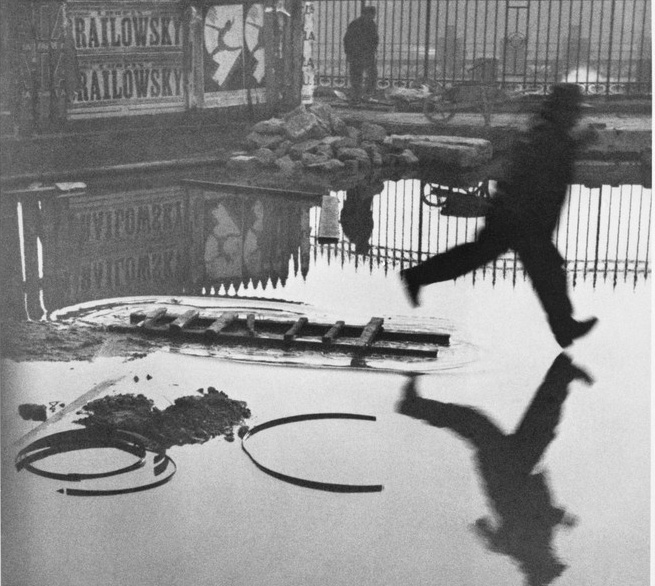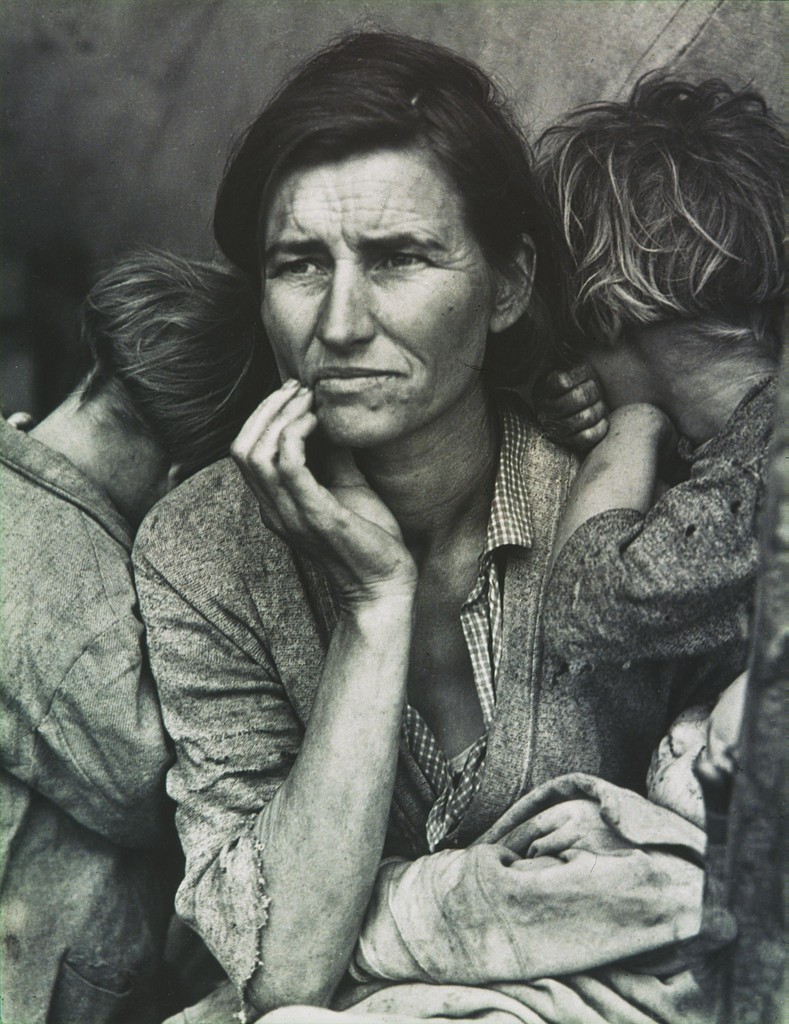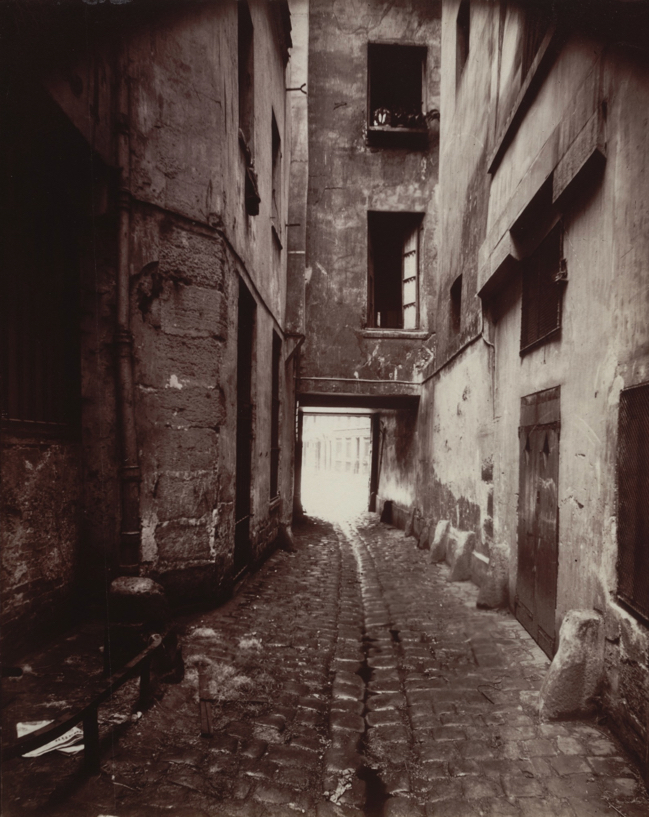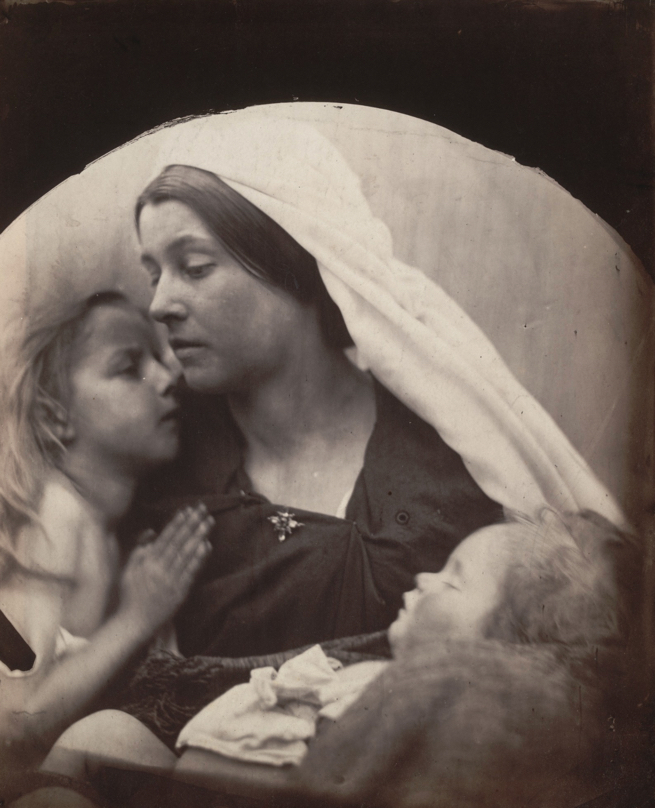Chapter 11.12: Art of Photography
In addition to the history of photography content discussed in 7.2 Photography, photography holds an important position in contemporary art. The art of photography can be documentary or creative in style with unlimited subjects and genres ranging from landscape to portrait to street photography to photojournalism and more. Additionally, we now have mobile photography that utilizes smartphones to document everything in our environments, contributing massive amounts of media data as an expression of visual culture. As discussed earlier, photography is also often used to create a final document for performance or conceptual artwork.
Since its inception, near the mid-19th century, the medium of photography has advanced technically from the early Daguerreotype chemical process requiring long exposures and cumbersome equipment to the current high resolution Digital Single-Lens Reflex cameras (DSLR) that not only produce high resolution still images but also high definition video. These images are no longer beholden to chemical processes but are instead manipulated and distributed in a fully digital environment.
An early example of snapshot photography by French photographer, Henri Cartier-Bresson (created in 1932) is discussed below. In his documentary style photo we see a moment in time has been captured and frozen. The portable and relatively fast shutter speed of his 35mm Leica camera made the image possible.
Video

Henri Cartier-Bresson, Behind the Gare Saint-Lazare (4:03)
Roles of Photography
The medium of photography is continually changing due to technology advancements while the photographer continues to explore, document, tell stories, record history and utilize the photographic tool creatively for communication and critique. One of the prominent genres of photography which encompasses journalistic photography is called documentary. It’s easy to infer meaning that documentary work is concerned with portraying an event or scene accurately to secure an accurate record, but is that always the case? The following link from MoMA, will help you explore the different ways photography has been used to document and interpret the modern world.
Photography is often perceived as an objective, and therefore unbiased, medium for documenting and preserving historic moments and national and world histories, and for visualizing and narrating news stories. But the choices made by a photographer—including how the image is composed, what is left in or out of the frame, and how it may be cropped, edited, or otherwise altered after it is taken—introduce a point-of-view into the photograph and inevitably impact how we receive and understand images. Such considerations raise critical questions about how willingly we accept any one photograph as a reflection of definitive truth.
Photographs can bear witness to history and even serve as catalysts for change. They can foster sympathy and raise awareness or, alternatively, offer critical commentary on historical people, places, and events. Throughout the history of the medium, photographers have aimed to capture the essence of events they witnessed—though the question of the trustworthiness of their images is always up for debate.
MoMA – The Photographic Record
Shortly after photography’s invention in 1839, rapid and succeeding technological advancements allowed photographic images to be adopted as memory aides, surrogates for direct observation, and even trustworthy duplicates of important documents. Photographs can provide glimpses into lives past, long-ago events, and forgotten places. They can help shape our understanding of culture, history, and the identity of the people who appear in them. Photography has been utilized in these ways, and perceived as a tool of accurate and objective documentation, because of its inextricable connection to the real world: light-sensitive film records what is before the camera’s lens. Generations of photographers have used the camera for this end, even as many of them acknowledge that their images are not fixed statements of fact but, rather, that they may be read and interpreted in many different ways.


20th century, new perspectives emerged, which challenged the idea of the photographic archive, and the photograph itself, as an objective record. Many contemporary artists have taken on photographs and photographic archives as the subject of their own work, re-examining and re-interpreting the histories they convey through methods ranging from appropriation to digital manipulation of existing images. In doing so, they seek to reveal biases, challenge accepted histories, and construct new narratives.
MoMA – Sets, Stories and Situations
In its early decades, photography was considered a valuable artistic tool—especially by painters who based their compositions on photographs—but not necessarily a fine art. By the mid-19th century, photographers and artists became eager to demonstrate that the medium had serious artistic potential and that photographs could be on a par with the long-established arts of painting and sculpture. Among the ways they did this was to stage and photograph tableaux based on literature or Biblical stories, which were historically the province of painters and sculptors.
Other photographers restaged well-known historic events that they were unable to capture in real time because of the technical limitations of early cameras and negatives.
Building and reflecting upon the legacy of early staged photography, many contemporary artists make their own elaborately structured photographs—with a twist. Their images are carefully constructed and meticulously photographed, but in ways that consciously reveal their artifice. By showing the ease with which images may be set-up or manipulated, these artists challenge the commonly held perception of photography as an objective medium.
Museum of Modern Art (MoMA) curator, Sarah Meister, takes us through a range of documentary photographs from early in photography’s history to the present day. Although we often make a direct parallel between a photograph’s subject and its meaning, Meister explains that a picture is rarely a perfect reproduction of the real world.
Street photographer, Garry Winogrand who began in advertising and as a photojournalist in New York, is known for his portrayal and visual commentary of American life and its social issues. He was apparently drawn to the Democratic National Convention of 1960 for an opportunity to explore a defining moment in American history. Dr. Robert Cozzolino and Dr. Steven Zucker discuss his work of that night.

Videos
Sarah Meister | Seeing Through Photographs (3:20)
Media Attributions
- Figure 1. Henri Cartier-Bresson, Behind the Gare Saint-Lazare, Paris, 1932 (Image source: St. Louis Art Museum, via Artstor. Used with permission, for education use only)
- Figure 2. Dorothea Lange, Migrant Mother: Nipomo, California, 1936 (Image source: University of California, San Diego via Artstor. Used with permission, for education use only)
- Figure 3. Eugène Atget. Courtyard, 22 rue Quincampoix. 1912 (Image source: The Museum of Modern Art. Used with permission, for education use only)
- Figure 4. Julia Margaret Cameron. Madonna with Children. 1864 (Image source: The Museum of Modern Art. Used with permission, for education use only)
Candela Citations
- Henri Cartier-Bresson, Behind the Gare Saint-Lazare. Authored by: Dr. Shana Gallagher-Lindsay and Dr. Beth Harris. Provided by: Smarthistory. Retrieved from: https://smarthistory.org/henri-cartier-bresson-behind-the-gare-saint-lazare/. License: CC BY-NC-SA: Attribution-NonCommercial-ShareAlike
- JFK and the power of media. Authored by: Dr. Robert Cozzolino and Dr. Steven Zucker. Provided by: Smarthistory. Retrieved from: https://smarthistory.org/seeing-america-2/winogrand-jfk/. License: CC BY-NC-SA: Attribution-NonCommercial-ShareAlike
- Documenting and interpreting the modern world. Provided by: MoMA. Retrieved from: https://www.moma.org/collection/terms/photography/explore-the-many-different-ways-photography-has-been-used-to-document-and-interpret-the-modern-world. License: All Rights Reserved. License Terms: Used with permission, for educational use only

